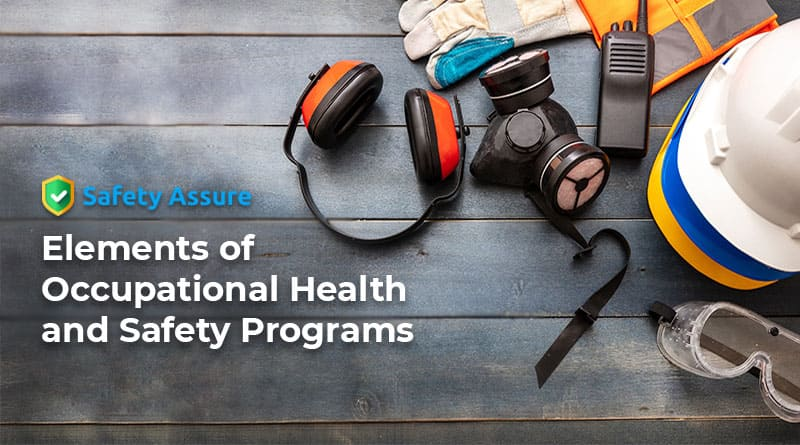The Essential Role of Occupational Health and Safety Programs in Modern Workplaces
Byline: Ensuring Employee Well-Being and Reducing Workplace Hazards
In today’s evolving work environments, Occupational Health and Safety (OHS) programs have become essential tools for protecting employee health, promoting safe practices, and fostering organizational responsibility. With companies facing increased scrutiny from regulators, stakeholders, and employees alike, robust OHS programs play a vital role in minimizing workplace risks and boosting productivity.
Understanding Occupational Health and Safety (OHS) Programs
OHS programs are structured initiatives designed to prevent work-related injuries, illnesses, and fatalities by identifying potential hazards, providing training, and implementing best practices across organizations. These programs generally cover hazard assessments, safety training, incident reporting, emergency response protocols, and regular health monitoring. By systematically addressing health and safety risks, OHS programs not only protect employees but also support long-term organizational growth.
Key Elements of Effective OHS Programs
A successful OHS program typically includes the following core elements:
- Hazard Identification and Risk Assessment
Regular workplace inspections help to identify potential hazards, whether they be physical, chemical, or ergonomic. By conducting risk assessments, organizations can prioritize safety measures and allocate resources effectively. - Employee Training and Education
Training is essential for equipping employees with the knowledge and skills to perform tasks safely. OHS training modules often cover the proper handling of equipment, recognizing hazardous materials, and emergency response techniques. Regular refresher courses help keep safety at the forefront. - Incident Reporting and Investigation
Establishing a culture where employees feel safe reporting incidents or near-misses encourages open communication. Investigations into incidents help determine root causes and improve practices to prevent future occurrences. - Health and Wellness Programs
Recognizing that employee well-being is key to workplace safety, many OHS programs incorporate health and wellness initiatives, including ergonomic assessments, mental health support, and wellness challenges. These programs aim to reduce stress and prevent injuries related to repetitive tasks. - Emergency Preparedness and Response
An effective OHS program includes clear emergency procedures for potential incidents, such as fires, chemical spills, or natural disasters. This includes regular drills, ensuring employees understand evacuation routes, and maintaining easily accessible first aid supplies.
The Benefits of OHS Programs
The advantages of OHS programs extend beyond immediate safety improvements. Companies that implement these programs experience significant benefits, including:
- Reduced Costs: Preventing workplace injuries reduces expenses related to medical treatments, legal claims, and insurance premiums. Effective safety programs can cut costs significantly by minimizing incidents and the associated downtime.
- Improved Morale and Productivity: A safe work environment fosters employee trust and boosts morale, which in turn enhances productivity and reduces turnover. When employees feel valued, they are more engaged and committed to their work.
- Compliance with Regulations: OHS programs help companies comply with legal standards set by regulatory bodies such as OSHA in the U.S. and HSE in the U.K. Meeting these standards not only prevents penalties but also contributes to a positive organizational reputation.
Trends Shaping the Future of OHS
As workplace dynamics shift, OHS programs are adapting to meet new challenges:
- Digital Safety Solutions: The integration of technology in OHS has introduced digital tools for tracking safety metrics, performing virtual safety audits, and offering online training modules. These advancements streamline processes and improve data accuracy.
- Mental Health Awareness: Mental health has become a significant focus, with companies implementing policies to support employees’ psychological well-being, addressing burnout, and reducing workplace stress.
- Diversity and Inclusion in Safety: As workplaces become more diverse, inclusive safety programs that address the unique needs of different employees are gaining importance. Tailored OHS training that respects cultural backgrounds and individual needs is becoming a best practice.
Implementing an OHS Program: Steps for Success
For companies looking to establish or revamp their OHS programs, a few key steps can help:
- Conduct a Safety Assessment: Begin with a thorough review of current safety policies and procedures to identify areas for improvement.
- Engage Employees: Involve employees in safety discussions and decision-making to promote a culture of shared responsibility.
- Set Clear Goals and Metrics: Define measurable safety goals, such as reducing incidents by a specific percentage, to help track program effectiveness.
- Regularly Review and Update: Workplace hazards and regulations evolve; OHS programs should be reviewed regularly and updated to ensure they remain relevant and effective.
Conclusion
Occupational Health and Safety programs are essential for fostering a culture of safety and responsibility in modern workplaces. By prioritizing these initiatives, organizations demonstrate their commitment to employee welfare, regulatory compliance, and sustainable business practices. In a world where workplace health and safety are paramount, OHS programs provide a foundation for a healthier, more productive workforce.











